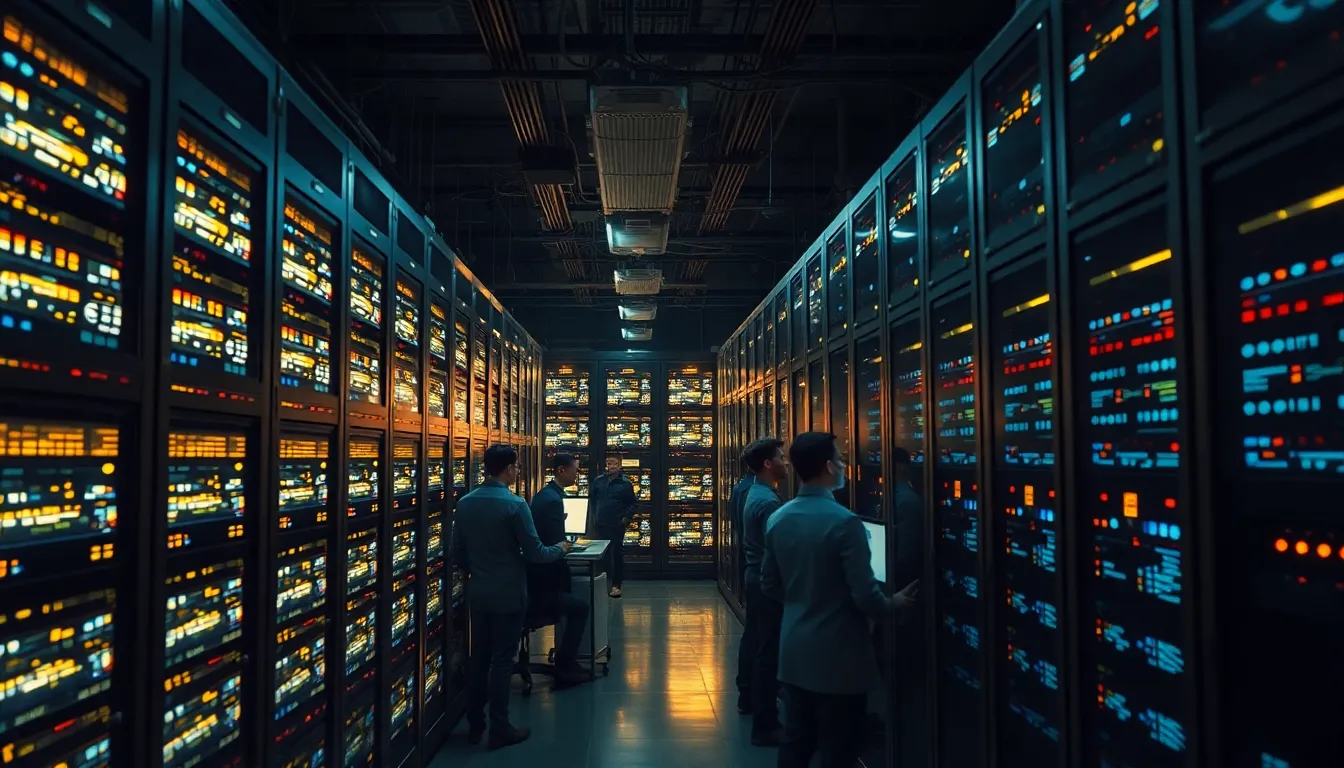Table of Contents
ToggleIn a world where instant gratification reigns supreme, waiting for a software update can feel like watching paint dry—especially when it comes to Uhoebeans. Users often find themselves tapping their feet and glancing at the clock, wondering if the update will finish before their next coffee break. So why is this seemingly simple task taking longer than a snail on a leisurely stroll?
It turns out that behind the scenes, a complex dance of code and data is happening. Uhoebeans’ software updates are like that friend who always shows up fashionably late; they want to ensure everything is just right before making an entrance. Dive into the quirks and complexities of Uhoebeans’ update process to discover why patience really is a virtue—even if it feels like an eternity.
Overview of Uhoebeans Software Updates
Uhoebeans software updates are essential for maintaining performance and security. These updates often encompass bug fixes, feature enhancements, and system optimizations. For many users, the wait can feel excessively long.
User expectations grow during the update process. Delays may arise from multiple stages, including coding, testing, and deployment. Each stage requires thorough evaluation to prevent issues post-release.
Testing plays a crucial role in the update timeline. Developers run extensive tests to ensure that every aspect of the software functions correctly. This meticulous approach minimizes the likelihood of errors affecting user experience.
Resource allocation impacts update speed. Teams dedicated to Uhoebeans updates must balance multiple projects simultaneously. Depending on the number of active tasks, delays can occur.
Feedback from users significantly influences future updates. Developers prioritize user suggestions and complaints when planning enhancements. Addressing genuine concerns helps build trust and satisfaction among the user base.
Continuous integration practices are vital. These practices facilitate quicker development cycles and streamline code modifications. While this may lead to faster deployments, it doesn’t eliminate delays inherent in comprehensive updates.
The combination of thorough testing, resource allocation, and user feedback information highlights the factors contributing to slow Uhoebeans software updates. Understanding these elements can help users exercise patience as they anticipate improvements.
Factors Affecting Update Speed

Several factors contribute to the slow update speeds of Uhoebeans software. These elements influence both the experience and the overall performance during the update process.
Server Load Impact
High traffic on servers significantly slows down software updates. Heavy usage can lead to bottlenecks, stretching the infrastructure. Users face longer download and installation times when many devices connect simultaneously. During peak times, server resources become limited, affecting all users equally. Increased demand results in slower response times, ultimately frustrating users awaiting enhancements and fixes.
User Device Specifications
Device specifications play a crucial role in update speed. Older devices with less processing power may face longer update times. RAM limitations can hinder the handling of large update files, causing delays. Storage capacity issues also affect the installation process, particularly if devices lack sufficient space. Operating systems that are outdated may lead to compatibility issues, further extending update durations. Optimization for different devices requires significant effort from developers, influencing overall update timelines.
Common Issues Experienced
Users encounter several issues that can contribute to the slow Uhoebeans software update process. Understanding these common problems can help mitigate user frustrations.
Connectivity Problems
Connectivity issues frequently disrupt software updates. When internet connections fluctuate or drop unexpectedly, download times increase significantly. High latency can also lead to failed downloads, causing repeated attempts that extend waiting periods. Network congestion further complicates matters, especially during peak hours when many users are online. Users often notice that switching to a more reliable network or using wired connections can improve update speeds. Troubleshooting connectivity by resetting routers or checking service status can provide solutions.
Storage Limitations
Storage limitations on user devices can considerably slow down the update process. When device storage nears full capacity, updates may fail to install correctly, necessitating manual cleanup. Users often find themselves having to delete applications, files, or old photos to free up space. Insufficient RAM and processing power also influence performance during installations. Updating to devices with higher specifications or optimizing current storage can alleviate these delays. Regular maintenance helps ensure devices remain prepared for new updates.
Solutions to Improve Update Speed
Enhancing the speed of Uhoebeans software updates involves several actionable steps. By making specific adjustments to settings and managing device storage, users can experience improvements.
Optimize Network Settings
Adjusting network settings can lead to quicker download times. Switching to a wired connection often provides a more stable internet experience compared to Wi-Fi. Modifying the router’s channel might reduce interference, improving signal strength. Changing DNS settings can also enhance speed; using a public DNS server is a popular choice. Additionally, disabling any bandwidth-heavy applications during the update process helps ensure maximum resource availability. Users might consider scheduling updates during off-peak hours when server traffic is lower, resulting in faster downloads.
Clear Storage Space
Ensuring adequate storage can significantly speed up software updates. Users often encounter delays due to insufficient space on their devices. Deleting unused apps and large files creates the necessary room for updates to install correctly. Regularly emptying caches also frees up valuable space. Checking for outdated content like old downloads and media files will help streamline storage management. Users should aim to maintain at least 15-20% free space on their devices for optimal performance during updates. This proactive approach reduces the likelihood of update failures and enhances overall device efficiency.
Understanding the reasons behind the slow Uhoebeans software updates can help users manage their expectations. While the wait can be frustrating it’s essential to recognize the intricate processes involved in delivering quality updates. Each stage from coding to testing is crucial for ensuring a seamless user experience.
Users can take proactive steps to enhance their update experience by optimizing their network and device settings. By addressing common issues like connectivity and storage limitations users can significantly reduce update times. Patience remains key as developers work diligently to deliver updates that enhance performance and security.





